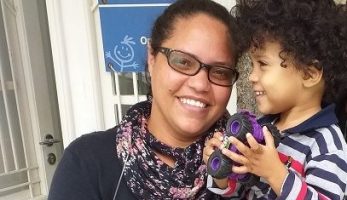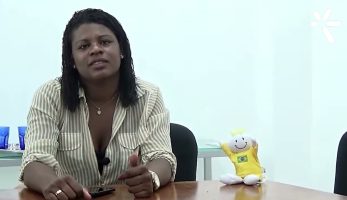By Raquel Menezes, coordinator of the Housing area at the Dara Institute
The plastic artist, Adriana Varejão, says that ‘the tile is the skin of the building’. Anyone entering the home of a family in extreme poverty notices the scars of misery on unfinished walls, with infiltration and mold. A picture that betrays the welcome that every home should offer: it is about safety and health, as many structural problems impact the well-being of everyone liveing there.
As with the other services provided by the Family Action Plan (PAF), in which the family is the protagonist, this is the same at home. The focus of action in the Housing area is to ensure the health of the home. The aesthetic issue is not our goal, but if the house looks better during the process, we have an additional gain in terms of the family’s self-esteem. We see that making the first improvement guided by us can motivate others, with the family itself keeping the momentum going. It’s as if the small adjustments ignited a spark of desire.
Assistance to families are offered in two ways: consulting, when small adjustments improve the health of the home and are carried out by the family itself with guidance from our team; and interventions, in which a team of professionals is needed for more complex work. Whether it’s a big change or a small one, the important thing is to use the moment as a tool to dispel an important taboo: the negative image these families have of themselves.
The majority of the public we serve are households headed by women. There is the stigma that carrying out this type of work is not for women, and only men can do it. There is also the weight they carry for not believing in themselves. That’s why, during the renovation, they both improve their homes and assume a part of life that they always thought wasn’t for them. And they discover they are eminently capable and are thus empowered.
Whether changing a tap with your own hands, choosing the wall coating, or accompanying the contracted professional. Every detail counts. The search for a healthy home also helps rescue the autonomy that will continue when the journey in partnership with Dara ends. Families who have already been through here tell of how the transformation continued after the service, because they came to believe in themselves and felt capable of making autonomous decisions. This is possible because we offer guidance and access to information, as often a lack of knowledge prevented these families from making assertive choices.
It is a journey of growing awareness. Our work begins when new families join the program. In an initial conversation, we get to know the state of the house, in a kind of diagnosis, which either guides the monthly consultations or indicates whether interventions are necessary.
During the consultations, we worked on raising awareness about the importance of small repairs to reduce health problems, such as asthma and allergy attacks, and that it is possible to implement these with minimal resources and, in some cases, even alone.
The houses of these families are homes under construction, and they need to accept the feeling and understanding that they are capable of finishing the work little by little. It’s a long-term learning experience, because a house, even well built, requires maintenance forever, because a lot of things wear out. We noticed that many families feel insecure because they don’t understand the work needed, or they think it’s expensive and, sometimes, because they quite simply believe their accommodation works as it is so nothing needs to be changed.
To be eligible for intervention, the family must fulfill three requirements: have been at Dara for one year; owning or borrowing a house (with a guarantee that they can settle there, such as a house provided by their parents); and be well assessed in the other pillars of the program. If, after the evaluation by our team, the work is considered viable, the planning process begins.
The family then gets three quotes from bricklayers or foremen. We talk to these professionals and, with my technical knowledge, I assess whether the prices are reasonable. Then, we get a list of materials, evaluate, suggest and question. With the list of items to be purchased defined, the family budgets with three building supply stores.
The final choice of professionals and supplier is made by Dara, based on the specific needs of the work, and not just the price. Once the choice is made, it’s time to deal with the bureaucracy, which is also part of the process. Families sign a material donation contract through Dara and are instructed to get the bricklayer’s signature on the service contract. It is then time to get to work. The family deals with the contracted building professional, accompanying the work from start to finish. We simply supervise. This process is very important to bringing the family closer to the improvements that the house needs and empowering them to take care of what is being done at home and to continue the process in the future on their own accord.
On one occasion, we helped a family whose home needed a retaining wall. Dara’s team carried out the intervention with a specialized team. When the family saw the wall ready, they were excited to paint it and this aesthetic change had an impact on the entire street. They are now making other adjustments to the wall from the inside on their own initiative. And this is exactly what we hope to achieve.
Faced with so many difficulties that the families we serve face, monitoring work at home is not among the most complex tasks. We work to break paradigms and prove that it is possible, yes, and that they are responsible for the ongoing transformation of their own homes. At the end of the process, an approval term for the work is signed by the family. What is evident is awareness, ownership and pride. New feelings to continue building the families’ stories.
HOUSING: Expert Opinion
Family-led home renovation leads to increased confidence and self-esteem.
By Raquel Menezes, coordinator of the Housing area at the Dara Institut




